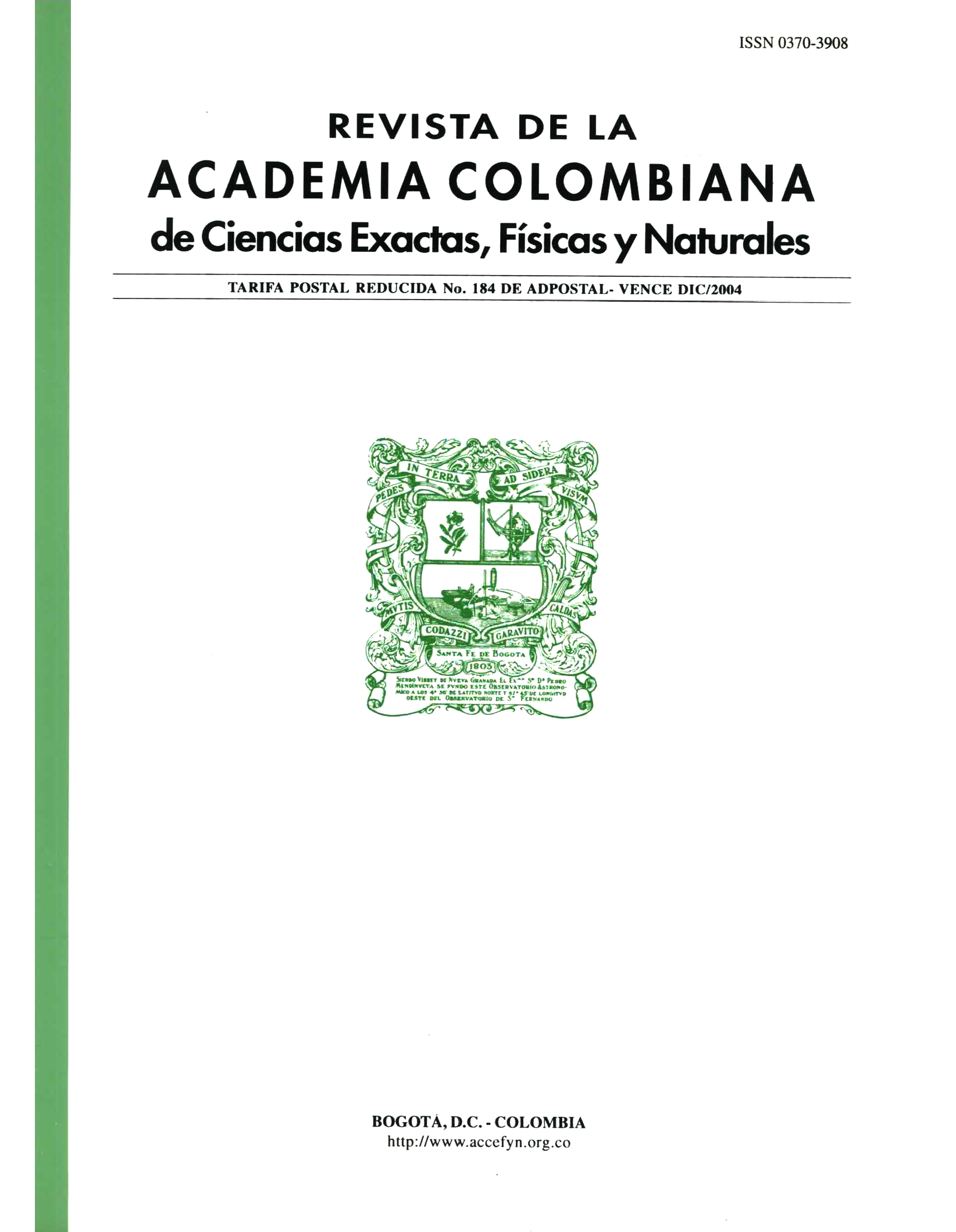Resumen
Los bosques tropicales se caracterizan por tener una alta riqueza y diversidad de especies. Existen diversas hipótesis sobre los factores que determinan el origen y mantenimiento de esta riqueza, las cuales han sido estudiadas a través de una red global de parcelas permanentes. Este es el primer estudio de gran escala sobre la estructura y dinámica de poblaciones de plantas en un bosque montano, a través de una parcela permanente establecida en la Reserva Natural La Planada (Nariño, Colombia). La parcela ha permitido el seguimiento de más de 130,000 árboles y arbustos pertenecientes a 240 especies de plantas a lo largo de cinco años. Los resultados revelan una tasa de mortalidad de plantas de 3.65%/año y una tasa de reclutamiento de 3.52% anual, mientras que el área basal y biomasa de la parcela incrementó en cerca del 5% en cinco años. Los bosques montanos de los Andes presentan una dinámica de poblaciones muy alta y tasas de crecimiento bajas comparadas con bosques tropicales en zonas bajas.
Referencias
Ashton, P. S. 1997. South Asian evergreen forests: some thoughts towards biogeographic re-evaluation. Tropical Ecology 2: 71-180.
Chave, J, C. Andalo, S. Brown, M. A. Cairns, J. Q. Chambers, D. Eamus, H. Fölster, F. Fromard, N. Higuchi, T. Kira, J.-P. Lescure, H. Puig, B. Riéra, T. Yamakura. 2005. Tree allometry and improved estimation of carbon stocks and balance in tropical forests. Oecologia 145: 87-99.
Churchill, S. P., E. Baslev, E. Forero & J. Luteyn. (eds.). 1995. Biodiversity and Conservation of Neotropical Montane Forests. New York Botanical Garden, New York.
Crane, P. R., E. M. Friis & K. R. Pedersen. 1995. The origin and early diversification of angiosperms. Nature 374: 27-33.
Condit, R. 1998. Tropical Forest Census Plots. Springer-Verlag, Berlin.
Condit, R. P. S. Ashton, N. Manokaran, J. V. LaFrankie, S. P. Hubbell & R. B. Foster. 1999. Dynamics of the forest communities at Pasoh and Barro Colorado: comparing two 50-ha plots. Philosophical Transactions of the Royal Society, B, 354: 1739-1748.
Condit, Richard S., Pitman, Nigel C. A., Leigh, Jr., Egbert Giles, Chave, Jerome, Terborgh, John W., Foster, Robin B., Núñez Vargas, Percy, Aguilar, Salomón, Valencia, Renato, Villa Muñoz, Gorky , Muller-Landau, Helene C., Losos, Elizabeth C. & Hubbell, Stephen P. 2002. Beta-diversity in tropical forest trees. Science 295: 666-669.
Connell, J. H. 1978. Diversity in tropical forests and coral reefs. Science 199: 1302-1310.
Fisher, R. A., A. S. Corbet & C. B. Williams. 1943. The relation between the number of species and the number of individuals in a random simple in an animal population. Journal of Animal Ecology 12: 42-58.
Gentry, A. H. 1982. Patterns of Neotropical plant species diversity. Evolutionary Biology 15: 1-85.
Grubb, P. 1977. The maintenance of species richness in plant communities: the importance of the regeneration niche. Biological Reviews of the Cambridge Philosophical Society 52: 107-145.
Harms, K. E., S. J. Wright, O. Calderón, A. Hernández & E. A. Herre. 2000. Pervasive density-dependent recruitment enhances seedling diversity in a tropical forest. Nature 404: 493-495.
Hubbell, S. P. 2001. The Unified Neutral Theory of Biodiversity and Biogeography. Princeton University Press, Princeton.
Hubbell, S. P. & R. B. Foster. 1990. Structure, dynamics, and equilibrium status of old-growth forest on Barro Colorado Island. Páginas 522-541 en A.H. Gentry (ed.) Four Neotropical Forests. Yale University Press, New Haven.
Janzen, D. H. 1970. Herbivores and the number of tree species in tropical forests. American Naturalist 128: 147-149.
John, R., J. W. Dalling, K. Harms, J. B. Yavitt, R. F. Stallard, M. Mirabello, S. P. Hubbell, R. Valencia, H. Navarrete, M. Vallejo & R. B. Foster. 2007. Soil nutrients influence distributions of tropical tree species. Proceedings of the National Academy of Sciences 104: 864-869.
Kanzaki, M., M. Hara, T. Yamakura, T. Ohkubu, M. N. Tamura, K. Sri-ngernyuang, P. Sahnalu, S. Teejuntuk & S. Bunyavejchewin. 2004. Doi Inthamon Forest Dynamics Plot, Thailand. Páginas 474-481 en Losos, E. & E.G. Leigh, Jr. (eds). Tropical Forest Diversity and Dynamism: Findings from a large scale plot network. University of Chicago Press, Chicago.
Losos, E. & E. G. Leigh, Jr. (eds). 2004. Tropical Forest Diversity and Dynamism: Findings from a large scale plot network. University of Chicago Press, Chicago.
Mendoza-Cifuentes H. & B. Ramírez Padilla. 2000. Flora de La Planada: Guía Ilustrada de Familias y Géneros. Instituto Alexander von Humboldt, Bogotá.
Morley, R. J. 2000. Origin and Evolution of Tropical Rain Forests. Wiley, Chichester.
Rangel, O. (ed.). 1997. Colombia Diversidad Biótica, Volumen II. Tipos de vegetación de Colombia. Instituto de Ciencias Naturales, Bogotá.
Richards, P. W. 1952. The Tropical Rain Forest. Cambridge University Press, Cambridge.
Ricklefs, R. E. 1977. Environmental heterogeneity and plant species diversity: a hypothesis. American Naturalist 111: 376-381.
Samper, C. 1992. Natural Disturbance and plant dynamics in an Andean cloud forest. Doctoral Dissertation, Harvard University.
Tilman, D. 1994. Competition and biodiversity in spatially stuctured habitats. Ecology 75: 2-16.
Uribe, C. (ed.). 2001. Bosques de Niebla de Colombia. Banco de Occidente, Cali.
Vallejo, M.I., C. Samper, H. Mendoza & J.T. Otero. 2004. La Planada Forest Dynamics Plot, Colombia. Páginas 517-526 en Losos, E. & E.G. Leigh, Jr. (eds). Tropical Forest Diversity and Dynamism: Findings from a large scale plot network. University of Chicago Press, Chicago.
Wright 2002. Plant diversity in tropical forests: a review of mechanisms of species coexistence. Oecologia 130: 1-14

Esta obra está bajo una licencia internacional Creative Commons Atribución-NoComercial-SinDerivadas 4.0.
Derechos de autor 2023 https://creativecommons.org/licenses/by-nc-nd/4.0

